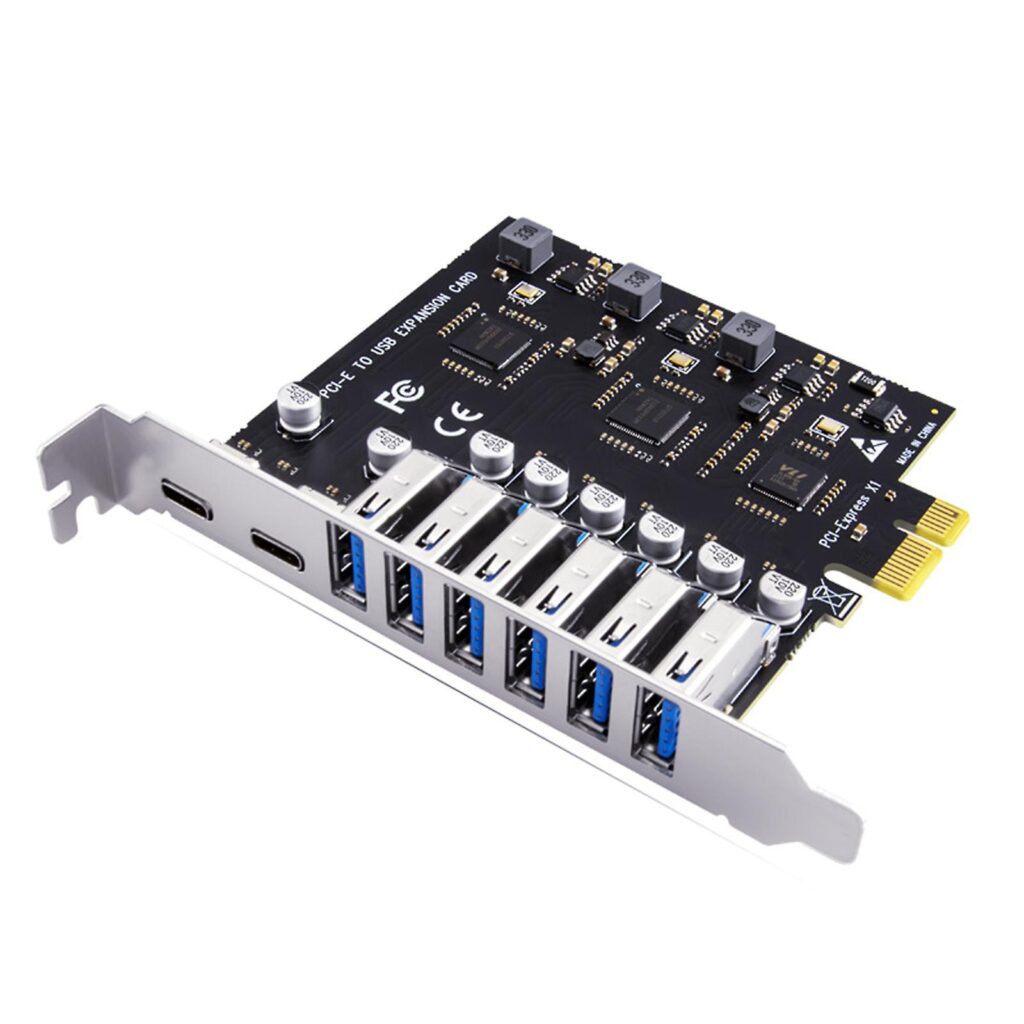
Computer Expansion Cards: A Comprehensive Guide In 2023? Computers continue to evolve in the fast-paced world of technology, providing us with greater capabilities and performance. One essential aspect of upgrading and enhancing a computer’s functionality is expansion cards. These small, powerful devices can significantly boost a computer’s performance, enabling users to handle more complex tasks and experience seamless computing. This in-depth manual will go into computer expansion cards, examining what they are, how they operate, and the various kinds offered in 2023.
What are Computer Expansion Cards?
Computer expansion cards, also known as expansion boards or add-on cards, are hardware components that can be inserted into slots on a computer’s motherboard to provide additional functionality. These cards are designed to enhance the performance and capabilities of a computer by adding features that may not be built into the motherboard itself. Expansion cards can significantly upgrade a computer’s graphics, audio, networking, storage, and more.
Understanding the Role of Expansion Cards
Expansion cards ensure a computer can adapt to various tasks and stay relevant in a rapidly advancing technological landscape. They allow users to customize their systems based on their needs, providing a tailored computing experience. Whether for gaming, multimedia editing, networking, or storage requirements, expansion cards offer a flexible and efficient solution.
The Evolution of Computer Expansion Cards
Computer expansion cards have come a long way since their inception. In the early days of computing, expansion cards were primarily used for basic tasks like adding extra memory or improving graphics capabilities. However, as technology progressed, expansion cards evolved to meet the demands of modern computing. Today, expansion cards can handle complex tasks and process data at lightning speeds, making them indispensable components in any high-performance computer system.
Types of Expansion Cards in 2023

Graphics Cards (GPU)
Graphics cards, or GPUs (Graphics Processing Units), are one of the most popular types of expansion cards. They are designed to handle graphics-intensive tasks and deliver high-quality visuals for gaming, video editing, and 3D rendering.
Network Interface Cards (NIC)
Network Interface Cards enable a computer to connect to a local network or the internet. They come in various forms, including wired Ethernet and wireless Wi-Fi cards.
Read More; How Does Gene Therapy Work In 2023?
Sound Cards
Sound cards are responsible for processing audio signals and delivering high-fidelity sound output. They are essential for users who require superior audio quality for music production, gaming, or multimedia consumption.
Storage Expansion Cards
Users can expand the amount of storage on their computers using storage expansion cards such as RAID controllers, which enhances data management and access speeds.
USB Expansion Cards
USB expansion cards increase the number of USB ports available on a computer, providing convenience for users who need to connect multiple peripherals.
RAID Controllers
RAID controllers manage multiple hard drives, enhancing data protection and performance through various RAID configurations.
TV Tuner Cards
TV tuner cards enable users to watch and record television signals directly on their computers, turning their systems into multimedia centers.
Modems
Modems provide a dial-up connection technique, enabling computers to connect to the internet via telephone.
Wireless Connectivity Cards
Wireless connectivity cards offer wireless networking capabilities, enabling users to connect to Wi-Fi networks without cables.
Ethernet Cards
Ethernet cards provide wired network connectivity, offering stable and high-speed data transmission.
Video Capture Cards
Video capture cards allow users to capture and digitize video content from external sources, such as camcorders or VCRs.
Factors to Consider Before Buying an Expansion Card
When selecting an expansion card for your computer, several essential factors should be taken into account:
Compatibility with Motherboard
Ensure the expansion card is compatible with your motherboard’s slot type and version to avoid installation issues.
Interface Type
Choose an expansion card with the appropriate interface type (PCIe, PCI, or others) that matches your computer’s slot availability.
Performance Requirements
Consider your performance needs and select an expansion card that meets or exceeds those requirements.
Cooling and Power Consumption
Check the cooling and power requirements of the expansion card to ensure it can operate efficiently within your computer system.
Budget Considerations
Set a budget for the expansion card purchase and find the best value within that range.
Installing and Upgrading Expansion Cards
Precautions Before Installation
Power off the computer before installing an expansion card and follow all safety precautions to avoid damage.
Step-by-step Installation Guide
Follow a step-by-step guide to properly insert the expansion card into the appropriate slot on the motherboard.
Upgrading Existing Expansion Cards
If upgrading an existing expansion card, uninstall the old card’s drivers and software before installing the new one.
Troubleshooting Common Issues
Driver Compatibility Problems
If the expansion card is not working correctly, check for driver updates or compatibility issues with the operating system.
System Instability
Address system instability issues by ensuring the expansion card is correctly seated and adequately powered.
Inadequate Power Supply
If the computer experiences power-related problems after installing an expansion card, consider upgrading the power supply unit.
Future Trends in Expansion Cards Technology
As technology advances, we can expect expansion cards to become even more powerful and efficient. Future trends may include:
- Faster data transfer rates.
- Increased integration with the motherboard.
- Expanded support for emerging technologies.
Conclusion
Computer expansion cards are indispensable components that allow users to customize and enhance their computing experience. From graphics cards that deliver stunning visuals to network interface cards that enable seamless internet connectivity, expansion cards offer a world of possibilities. When choosing an expansion card, consider compatibility, performance, and budget to make the most informed decision.
FAQs
Can I install multiple expansion cards on my computer?
As long as your motherboard has open slots and your power supply can support the additional load, you can install numerous expansion cards.
How often should I upgrade my graphics card?
The frequency of upgrading your graphics card depends on your needs and budget. As technology advances rapidly, upgrading every 2-3 years can keep you up-to-date with the latest graphical demands.
Can I use a USB expansion card on a laptop?
Yes, USB expansion cards are compatible with laptops and can provide additional USB ports for connecting peripherals.
What is the difference between PCIe and PCI expansion cards?
PCIe (PCI Express) offers faster data transfer rates than the older PCI standard, making it ideal for high-bandwidth devices like graphics cards and SSDs.
Are RAID controllers only for servers?
While servers commonly use RAID controllers for data redundancy and performance improvement, they can also be used in desktop computers for enhanced data management and protection.












4 Comments